Which Breed of Rabbit is Most Child Friendly?

Fuzzy, warm, and cuddly! That’s why bunnies are popular pets among kids and kids-at-heart.
Rabbits, in general, make fine pets. But not all breeds are good with children. Even with their (mostly) easygoing temperament and friendly demeanor, some rabbits are just not the ideal ones to have with kids. Let’s find out which breed of rabbit is most child friendly and which ones make great pets with young children.
Best Rabbits Breeds with A Friendly Nature: Key Take-Aways
When searching for a breed of rabbit that will make the best pet for a child, the good news is there are many that will make wonderful pets for young children. Keep these most popular rabbit breeds in mind:
- Himalayan Rabbits: These small-medium rabbits have a good temperament and a good natured demeanor.
- Harlequin Rabbits: These medium-sized rabbits are playful and docile making them a good family pet. Like all rabbits, they do not enjoy being picked up however.
- Chinchilla Rabbits: These large breed rabbits can be a good companion for your family as they have a super sweet nature.
- Mini Rex Rabbits: These small breed rabbits are a popular choice for a family pet, and with good reason – they have a playful personality.
- California White Rabbit: These larger breed rabbits are also very docile and have a calm nature.
- Flemish Giant: These large breed rabbits are very patient and tend to be some of the largest rabbits breeds found in the United States.
Factors to Consider When Choosing A Child-Friendly Rabbit
All 49 bunny breeds are unique and amusing in their own way. But not all are the best rabbit breeds for being child-friendly.
So, here are the factors to consider when choosing a companion rabbit for your child:
- Age
Small children and rabbits…doesn’t sound like a pretty combination.
Unless your child is a bit older (7 years and up), and you’ve got a lot of time overseeing both, perhaps you should wait a few years more.
There’s also the risk of both your loves having an injury.
Your startled bun might scratch your child, or they could accidentally mishandle your bun resulting in leg/back injury.
But it’s up to you and your family. Some families are having a great time living with a rabbit.
As for the rabbit’s age, it’s best if you get a rabbit that’s at least old enough to be neutered or spayed. Hormonal surges can cause bad temperaments, random peeing and even aggressive behavior. A neutered rabbit is a happier pet, plus they’re easier to litter train.
Keep in mind that rabbits do not typically like to be held, which could be a deciding factor for first-time rabbit owners, both children and adults.
- Size
When it comes to size, should you get a smaller or bigger breed for your child?
A general rule of thumb is that giant rabbit breeds are more friendly and laid-back and less flighty and nervous than dwarf rabbits or even smaller breeds.
- Temperament
Most people think that because the smallest breeds are tiny, they would be easy to take care of.
On the contrary, the smallest ones are sometimes wildly active. They are also usually the ones who aren’t friendly with small kids, not because of their size but because of their temperament.
- Lifespan
Because a child gets attached easily, you should also take note of the rabbit’s lifespan.
Get your child a companion rabbit with a long lifespan and a delightful personality. This way, everyone’s happy.
Note: Rabbits can live between 5-10 years, with giant breeds usually having a bit longer lifespan.
Find out more about rabbit lifespan in these posts:
How Long Do Holland Lop Rabbits Live
Top 12 Most Child-Friendly Rabbit Breeds
Dwarf and Small Rabbits
As I’ve mentioned earlier, due to their small size, dwarf and small rabbits are the best pets for older children:
1. Dutch
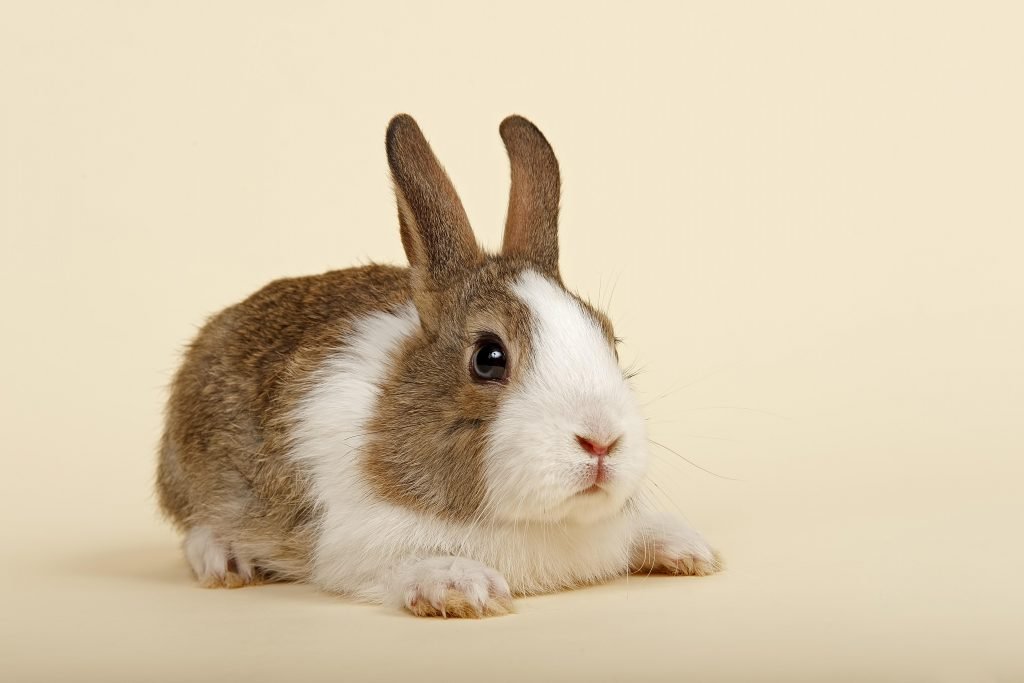
Dutch rabbits weigh around 3-3.5 pounds (11”-14” body length). What’s unique about them is their dark head with white stripes starting from their nose toward the face.
Plus, they also have a white band all over their middle.
As smaller rabbits, Dutch rabbits capture a fur parent’s hearts with their tranquil nature and striking intelligence.
Because they can be quite the hoppers, you need to help them get their bodies moving by playing with them or just letting them roam around your garden.
2. Holland Lop
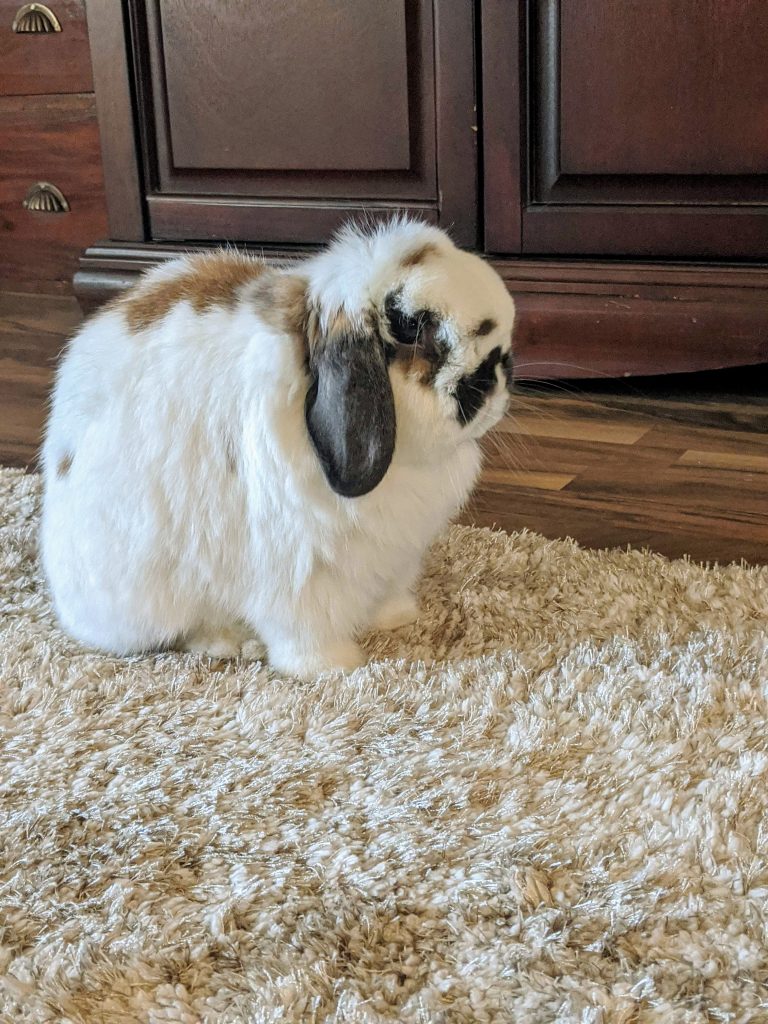
Here’s a rabbit that could become the next fur baby in your household. They’re obedient. And like the Dutch rabbits, they’re also intelligent and crave human attention. Therefore, get ready to entertain them!
With their floppy ears, Holland lops weigh just around 2.5-4.5 pounds. Their coats can be a variety of colors, from grey to white to brown, even this beautiful Harlequin shade and this orange shade.
But make sure to regularly check their teeth (if they have overgrown teeth), their coat (if it has feces or urine), among others.
Note: our Holland Lop joined our family when our youngest was 7, so smaller buns can make good pets for young kids. Just keep an eye on kids who aren’t familiar with bunnies – picking them up should be discouraged as they can be dropped (and badly injured).
3. Lionhead

Lionheads are cute and captivating–in terms of their weight (up to 3.75 pounds, 8-10 inches long) and appearance.
These long-haired rabbits have fur that can be 2-3 inches long and in various colors. around their neck and ears, similar to that of the lion, is what sets them apart.
This long hair coat is also present around their face and hind legs. So, they need regular brushing.
Like the previous child-friendly rabbits above, it’s also possible to train Lionhead rabbits. They’re well-mannered but can be quite aggressive at times.
Check out this Teddy lionhead and this dwarf lionhead for some very small rabbits!
4. Mini Rex

Mini Rex’s (3-4.25 lbs., 10.5”-12.5” long), like the Lionheads, have their own way of standing out. They don’t have a mane, but they do have short but plush fur that can be many colors, like this blue mini-rex and this black otter rex.
Because of their short underfur (or guard hairs), they are more sensitive to cold weather temps.
When you opt for this breed, ensure that you give them a nice warm spot inside the house or, if kept in outdoor housing, more insulation by adding straw or placing their cage in a heated space.
Aside from extra warmth, a Mini Rex also needs you to provide him with a resting board.
Rex rabbits are more prone to calluses around their footpads. This is because they lose fur in this area quicker than other breeds.
Reference this post on how big rex rabbits get to get a complete picture of their size.
5. Himalayan Rabbit
The Himalayan rabbit can be up to 5 pounds.
These rabbits are good natured and have an easy going demeanor, making them great for showing in competitions.
They are a good choice as a child-friendly rabbit as they are one of the friendliest rabbit breeds.
While they are commonly mistaken for the California rabbit, the Himalayan is usually a bit smaller in size.
Medium Size Rabbits
6. Mini Lops
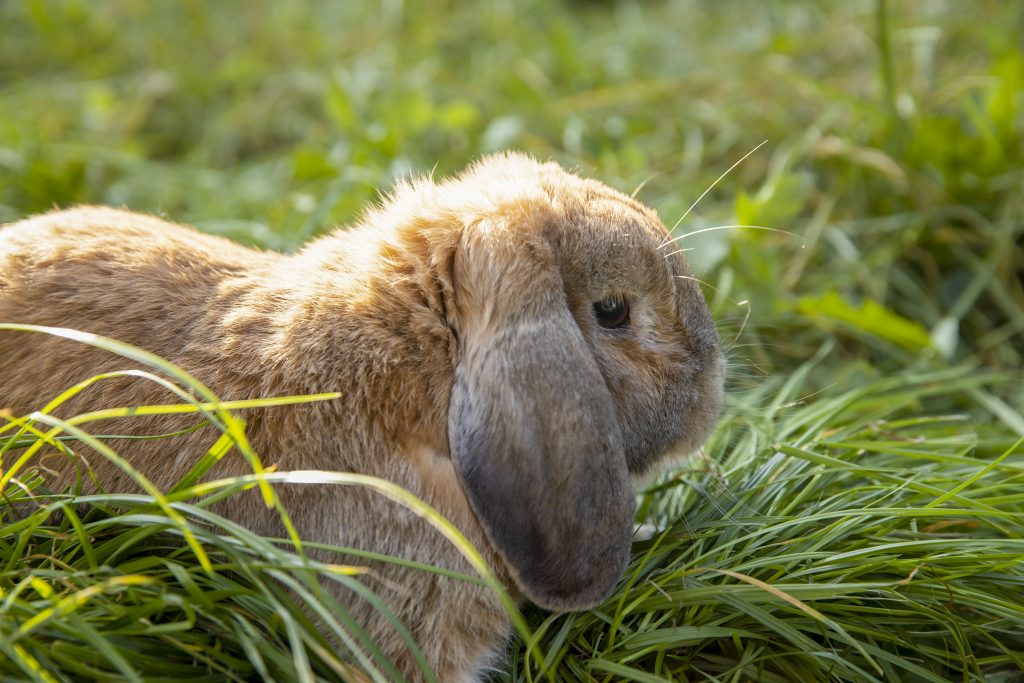
Mini lop rabbits are like a smaller version of French Lop. They weigh up to 6.5 pounds.
While their fur can be several shades of colors, their huge ears that flop down are the ones unique to them and other lop rabbits.
Aside from these attractive features, they are also soft-hearted and are drawn to people. Expect them to be devoted to you and be sensitive to your feelings.
When it comes to caring for them, you should be more attentive to their floppy ears as they could be susceptible to ear mites and other infections.
Mini lop rabbits are the breed you typically find in a pet store as they are one of the most popular breeds of rabbits.
Check out this post comparing the mini-lop to the holland lop to see the differences in these very similar breeds.
7. Harlequin Rabbit
The harlequin rabbit is typically around 6.5 pounds. This medium-sized rabbit is playful and easy going, making them a great choice for kids.
They are known for their unique coat colors and fur markings.
According to the American Rabbit Breeders Association, there are two types of harlequins, Japanese harlequins and the Magpie harlequin. Either will make an excellent pet.
8. Havana

If you’ve got a space for a little one in your home, consider a Havana rabbit.
Here are the reasons why:
They are short and compact and weigh around 4.5-6.4 pounds. Havana rabbits can have silky black, blue, or chocolate coats.
They are bright and not aggressive. Thus, capable of being house-trained and will do well in positive reward-based training.
They also have lots of energy! So, be ready to be creative when it comes to creating or buying toys for them. Also, make sure you have enough space for them to hop around.
9. Californian

Crossed between Chinchilla and Himalayan, the Californian rabbit is quite an energetic rabbit. They may be shy at first, but if you spend enough time with them, you’ll get to know their personality.
California rabbits weigh around 8-10 pounds. Looking like a siamese cat, they typically have white fur except the ears, nose, feet, and tail area.
Due to their dense coat, you can take care of them either indoors or outdoors. When you put them outside–check their coats regularly for fly eggs, especially during summer.
This breed is also similar to the New Zealand whites breed, which have almost the same markings as the Californian.
Larger Rabbits
10. Chinchilla Rabbit
Standard chinchilla rabbits are large rabbits and average 7-9 pounds in weight and have super soft, short fur that begs to be pet!
Chinchilla rabbits are not the same as the chinchilla rodent. They are playful and curious rabbits and have no relation to the rodent, aside from the name.
Find out more about the chinchilla bunny here.
11. Flemish Giant
The Flemish giant is a larger rabbit breed that can top the scales at 20 pounds and be up to 4 feet long. These rabbits are known as gentle giant as they are patient and docile.
Despite their large size, they can make perfect pets as their large size discourages handling, which means a lot less stress on them.
12. French Lops

French lops are enormous, but they’re also quite a lovely companion because they’re affectionate and have a mellow and laid-back personality.
So, it isn’t surprising that they are one of the favorites as a companion rabbit.
On the downside, due to their weight (at least 11 lbs), they are more likely to have a skin problem called sore hocks. It’s best if you have a resting board ready for them.
French lops also need time to roam around. But you don’t have to keep them outside. Bring them inside after giving them time to jump around.
And due to their size–you need to have a larger cage, nesting boxes, etc.
Friendliest Rabbits Breeds FAQs
Himalayan rabbits, harlequin rabbits, chinchilla rabbits, and mini rex rabbits are typically very friendly and easy-going rabbits.
Mini-lop rabbits can be good for older children, They are typically friendly and playful.
Mini-lop rabbits, Dutch rabbits, mini-rex rabbits and California rabbits are typically the easiest to care for as they are calm and friendly, which is very important when it comes to cleaning their cage or enclosure.
For a first-time rabbit owner, a friendly rabbit such as the mini-lop rabbit, mini-rex rabbit, Dutch rabbit or California rabbit are great options to start with.
More on Different Rabbit Breeds
- How Big Do Holland Lop Rabbits Get? Complete Guide
- How Long Do Flemish Rabbits Live: Giant Breed Facts
- Are Rabbits Rodents? Find Out More About These Small Mammals
- How Long Do Holland Lop Rabbits Live?
- All About Bunnies with Red Eyes: Why and How They Get Red Eyes
We hope you enjoyed this post! If you did, will you give it a share or two 🙂 Thank you! ~from Every Bunny Welcome


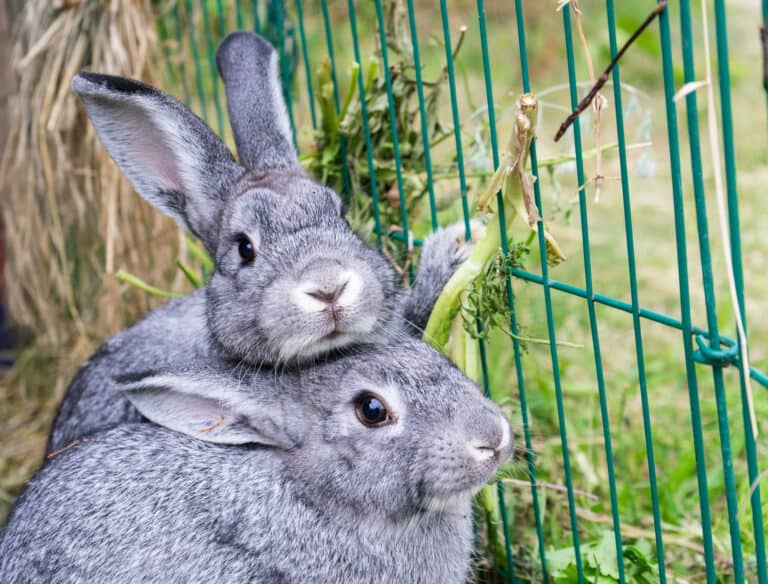
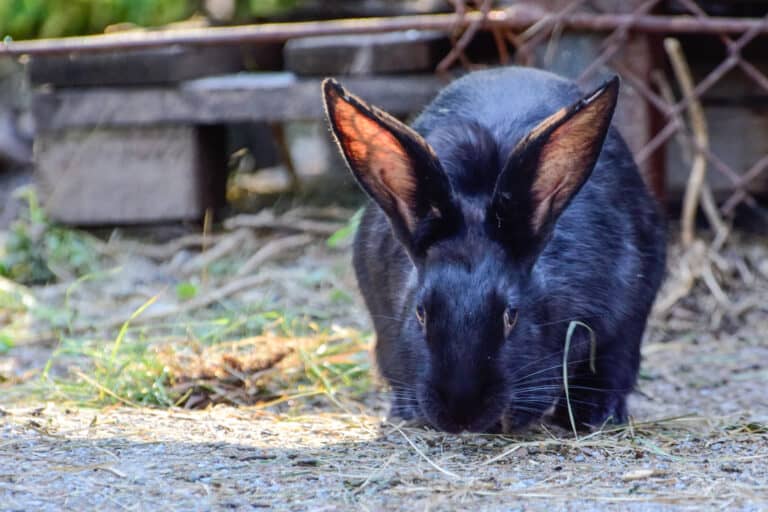
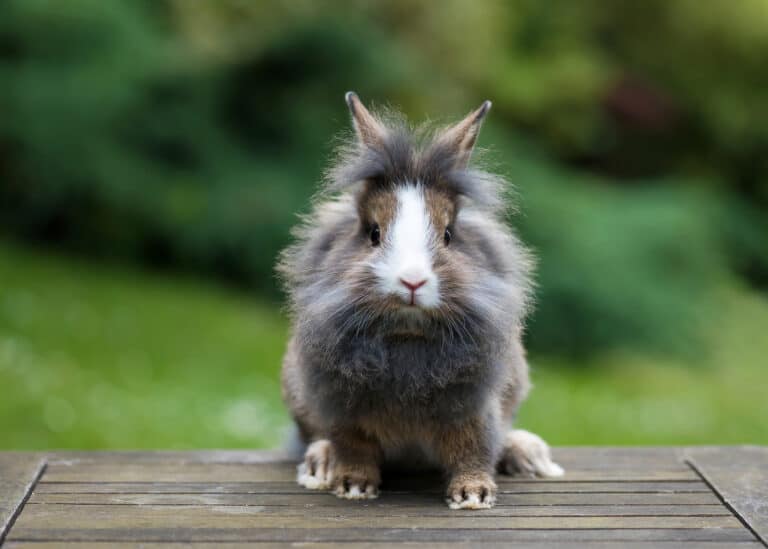
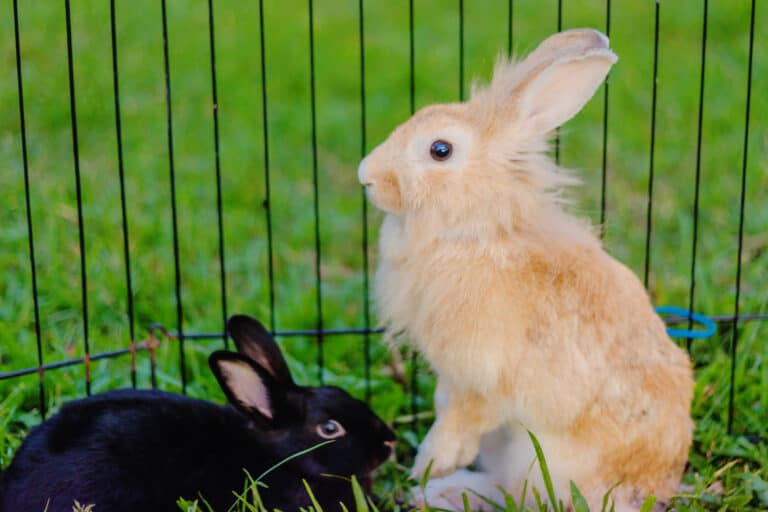
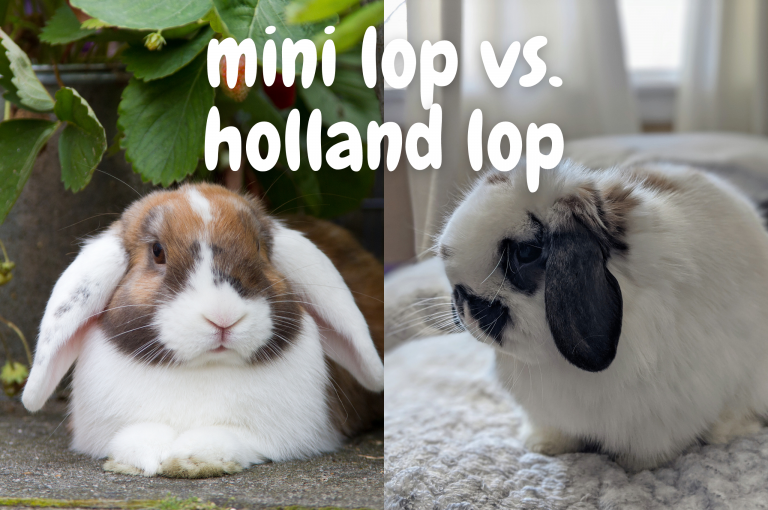
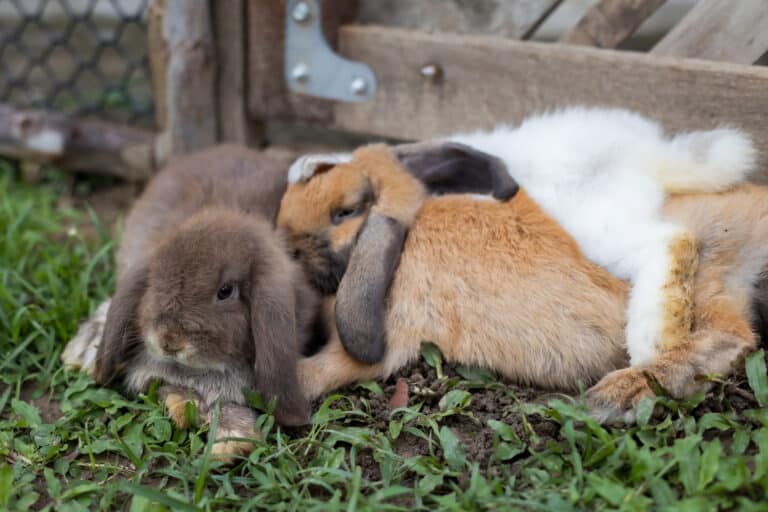
I didn’t see the English lop ? How come?
Hi Margo,
Apologies for the delay in responding, your comment was stuck in another folder! Aw, English lop is a great one too. I might have to add another couple to this list!
Christine